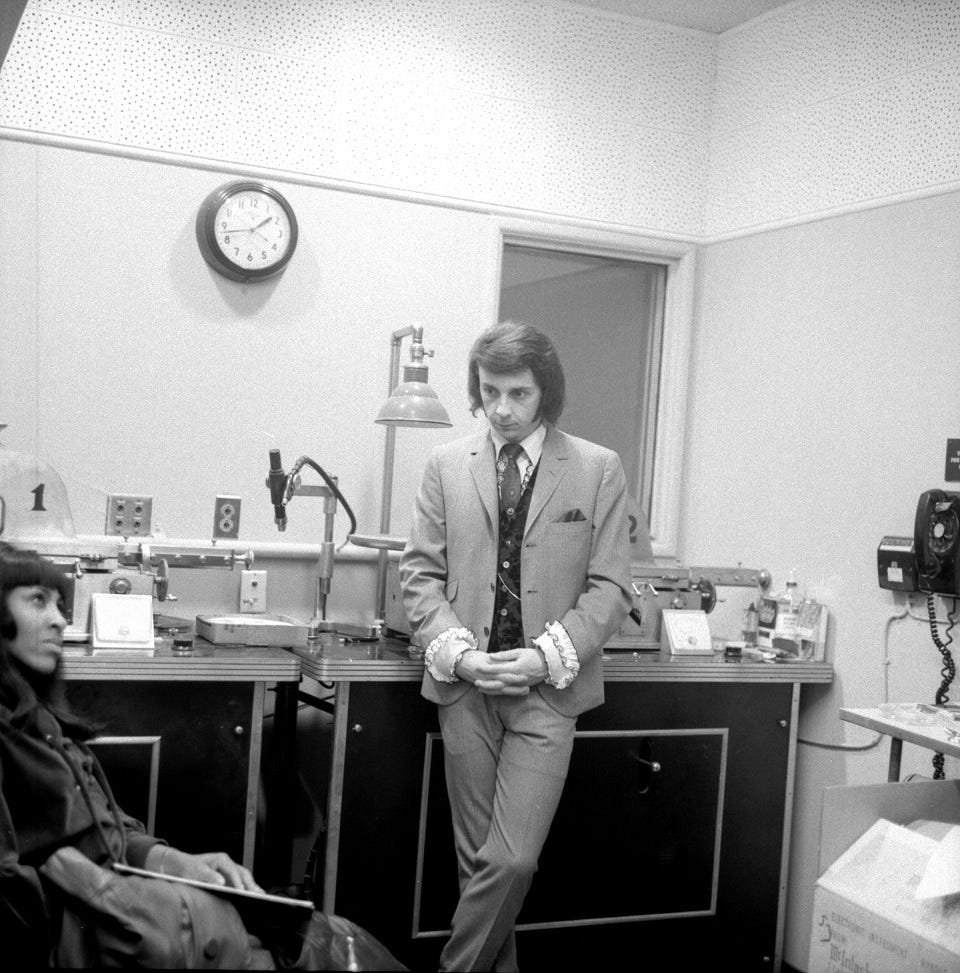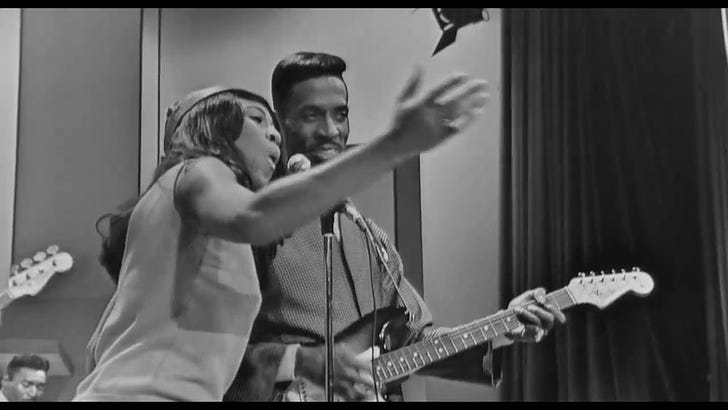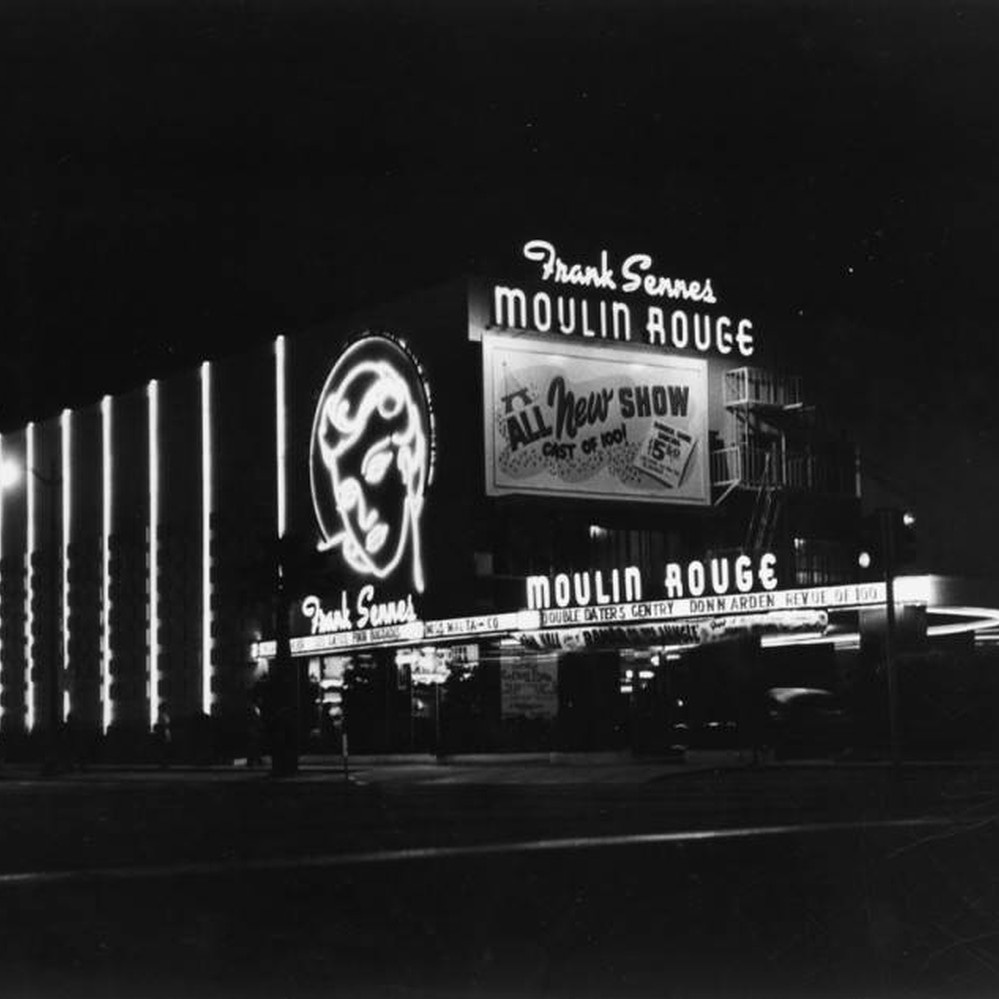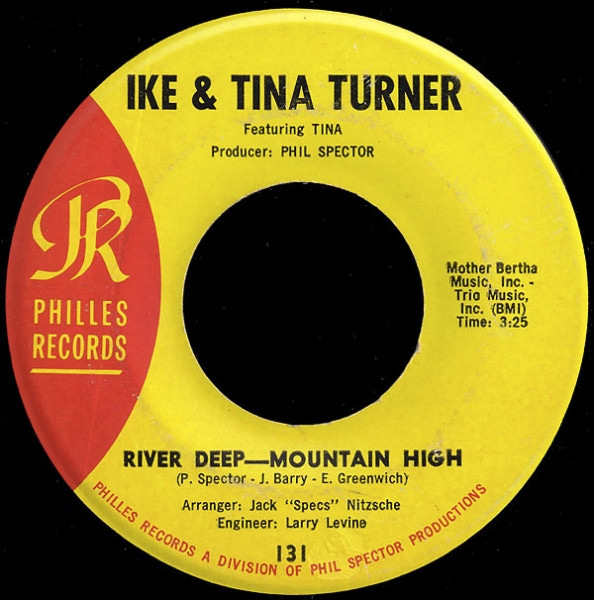Tina Turner, The Link Between Legends, 1966: Phil Spector's "River Deep-Mountain High"
One superstar was overwhelmed to the point of being inspired to produce her. Another legend just wanted to be around to simply watch. Somehow, history was going to be made. It was inevitable.
The Tribute
The whirlwind that was the incomparable Tina Turner was silenced May 24, 2023, at age 83. There will be the inevitable debates about the greatest hits, the most exhilarating performances, and the most iconic videos by the 2-time Rock Hall of Fame inductee. And, all will be correct, accurate, and well-presented, I’m sure.
This tribute will focus on one song. It’ll threaten to be “high-jacked” by some high-powered, towering musical figures themselves, and the reader might feel focus is being pulled away from the magnificently-riveting Ms. Turner.
But, one superstar was drawn to her undeniable talent, and wanted to put it on full aural display to the extent possible, and use it to hopefully eclipse a just-won chart victory.
The other just wanted to observe two masters in their respective elements, and absorb their “good vibes.” His on-looking might actually have led to the inspiration behind a ground-breaking rock classic.
Tina Turner: The Artistic Link Between Classics (“You’ve Lost That Lovin’ Feelin’” and “Good Vibrations”)
Spector’s Philles Records was founded in 1961; “Phil” for himself, “Les” for co-founder, record exec, Lester Sill. In 1962, Spector bought out Sill’s stock, and at 21, became the youngest label prez in the country.
Phil Spector spent all of 1964 producing and releasing three Ronettes singles, ending with “Do I Love You” (written by Spector, Vini Poncia, and Peter Anders) peaking at #34 on the Billboard Top 100 on August 1 of that year.
1965, then, would be all about The Righteous Brothers, with no fewer than five singles produced and released on Spector’s Philles Records that calendar year, starting with “You’ve Lost That Lovin’ Feelin’” (written by Spector, Barry Mann, and Cynthia Weil). That indisputable classic hit the top spot (on February 6, 1965) in both the U.S. and UK, the producer’s third #1 in eight years.
In order, The Righteous Brothers followed up their classic with “Just Once in My Life” (peaking at #9 in May), “Hung on You” (a disappointing #47 on August 21), “Unchained Melody” just a week later, topping out at #4, and “Ebb Tide” reaching #5 in January 1966.
Meanwhile, The Student Waits
Brian Wilson and Mike Love composed the Beach Boys’ “Good Vibrations.” Brian produced the legendary track, and every inch of tape (90 hours worth, it was later estimated for this song alone, in sessions costing tens of thousands of dollars) was quite literally “his baby.”
He was left to his own prodigious devices, famously driving among three, if not four, different studios patch-working the song into an as yet unheard-of symphony of sound in sections…what band publicist Derek Taylor called, a “pocket symphony.”
Brian’s “workshops” were all Los Angeles/Hollywood studios: Western Studio 3, a Columbia Square former radio theatre converted into studios, and Gold Star Studios, where Phil Spector had created his string of early-’60s girl group hits, and had just finished a year with The Righteous Brothers.
He had to have noticed “You’ve Lost That Lovin’ Feelin’.”

“Good Vibrations” was recorded between February 17 and September 21, 1966.
“River Deep-Mountain High” was recorded in 5 sessions at Gold Star in the month of March 1966. Brian, in other words, was within a month of having started his orchestral opus in February, and Spector holding court in those same Gold Star Studios’ echo chambers The Ronettes, The Crystals, Darlene Love, and The Righteous Brothers (and so many more) made their Spector-produced hits.
Brian has never been shy, even then, in declaring his love of Spector’s work, and the layered sounds he was able to squeeze onto 7-inch slabs of vinyl. He knew Spector favored Gold Star, and was likely a cross between fawning fanboy and driven artist, certain that there must be some way to get “these sounds in my head” onto plastic.
For “Good Vibrations,” as Wilson told Daniel Harrison in his 1997 After Sundown book, “I had a lot of unfinished ideas, fragments of music I called ‘feels’. Each feel represented a mood or an emotion I’d felt, and I planned to fit them together like a mosaic.”
Engineer Chuck Britz is quoted as saying that Wilson considered the song to be “his whole life performance in one track.” Wilson continued: “I was an energetic 23-year-old. I said: ‘This is going to be better than “You’ve Lost That Lovin’ Feelin’.’”
He figured if he could use those same Wrecking Crew players Spector employed in the same exact space…
In two months, Spector and his Philles label released “River Deep-Mountain High” in May 1966.
It came to a screeching halt at #88 on Billboard’s Hot 100.
The Legend Enters
According to Kurt Loder and his 1985 Chicago Tribune article, Phil Spector had seen the Ike & Tina Turner Revue perform at a club on the Sunset Strip, and invited them to appear on The Big T.N.T. Show (a sequel to the popular 1964 T.A.M.I. Show, or “Teen Age Music International,” theatrical release, produced by the low-budget MGM property, American International Pictures, or AIP, with music produced by Spector; both films were shot on videotape and transferred to 35mm film).
Ike and Tina performed in The Big T.N.T. Show concert film, which was shot before a live audience at the Moulin Rouge club at 6230 Sunset Blvd on November 29, 1965:
Spector was impressed by Tina, and wanted to use her voice with the (first-call L.A. session players) Wrecking Crew, and his “Wall of Sound” layered, multi-tracking production technique.
He went to the Turners’ house, and struck a deal with Ike to produce Tina. Ike agreed, but wanted the recordings to be credited to Ike & Tina Turner, even though the deal stipulated Ike would have no involvement in the recording, according to Mick Brown and his 2012 book, Tearing Down the Wall of Sound.
In fact, a clause in their contract actually stated that Ike would be paid $20,000 upfront to stay away from the recording studio while Tina performed on a Spector/Philles session with The Wrecking Crew.
At the time the duo was signed to Loma Records (a subsidiary of Warner Bros.). Spector negotiated a deal with Ike & Tina’s manager, Bob Krasnow, who was also head of Loma. Krasnow would later co-found Blue Thumb Records in 1968, and serve as Elektra Records chairman before co-founding the Rock and Roll Hall of Fame in 1983.
Phil offered $20,000 ($167,000 in 2021 dollars) to have them released from their Loma contract. After Mike Maitland (then-Warner president) gave them their release, they signed with Spector’s Philles Records (per Cashbox, April 1966).
“River Deep-Mountain High” was written by Spector, Jeff Barry and his wife, Ellie Greenwich, and was recorded in 5 sessions at the outrageous 1966 sum of $22,000 ($184,000 in 2021 dollars).
It has been reported (Harvey Kubernik, 2011 Goldmine) that Brian Wilson attended the session, where he sat “transfixed” and “did not say a word.”
PERSONNEL
Lead vocals: Tina Turner
Background vocals: Darlene Love, Fanita James, Jean King (as a trio, they were known as The Blossoms; they sang “He’s a Rebel,” but Phil credited The Crystals, a story for another time), Gracia Nitzsche (arranger Jack Nitzsche’s wife), Clydie King
Composer/lyricists: Phil Spector, Jeff Barry, and Ellie Greenwich
Producer: Phil Spector
Arranger: Jack Nitzsche
Musicians: Leon Russell (keyboards), Michel Rubini (piano), Jim Horn (saxophone), Barney Kessel (guitar), Glen Campbell (guitar), Earl Palmer (drums), Carol Kaye (bass guitar), Frank Capp (percussion)
The Sessions
After several rehearsals, and two sessions for the musicians to lay down a backing track, Spector got Tina into the studio on March 7, 1966, but she was unable to provide what he wanted, according to Mick Brown’s 2012 book.
The following week she returned to the studio with Ike. Due to Spector’s infamous perfectionism and tendency to abuse workers in the studio, he made her sing the song over and over for several hours until he felt he had the perfect vocal take for the song.
She recalled: “I must have sung that 500,000 times. I was drenched with sweat. I had to take my shirt off and stand there in my bra to sing!”
Outtake #2, Gold Star, 1966: Phil: “Frankie Capp (percussionist…on bongos), got a little carried away with yourself, there!”👇
Outtake #3: Phil: “One more time…it’s still too slow.”👇
Outtake #4: Phil: “One more time…I need the horns on that intro! The same way they do it first ending…take 13.”👇
Outtake #5:👇“Take 15”:
Outtake #6:👇
Outtake #7: Instruments and background singers mic-ed and up-front👇:
Final Outtake, #8, and wrap👇:
Outtakes are taken from the bootleg, What You See Is What You Get (Big Fro Discs). These tracks are in stereo, despite Phil Spector’s well-known love of mono. Thanks to Ben’s 2011 tinaturnerblog for access.

George Harrison praised the record, declaring it “a perfect record from start to finish. You couldn’t improve on it.”
“River Deep-Mountain High” has since been recognized as one of pop music’s masterpieces, ranked at #33 on Rolling Stone’s 500 Greatest Songs of All Time and inducted into the Grammy Hall of Fame in 1999.








You see, Brad, the thing with you is, we (your readers) know you know your stuff very well, and then you always manage to, somehow, surprise us time and time again with unexpected data and info God knows how you manage to dig out. Bravo. As for Tina, what could I possibly add to the plethora of messages from all sources that inundated the web when we heard of her passing. Few artists could command such a powerful stage presence and inspire millions across generations with her music, her lust for life, her grit and her legacy.
Love this breakdown. My hot (cold?) take is that I prefer the rocked out version of River deep to the original Specter version.